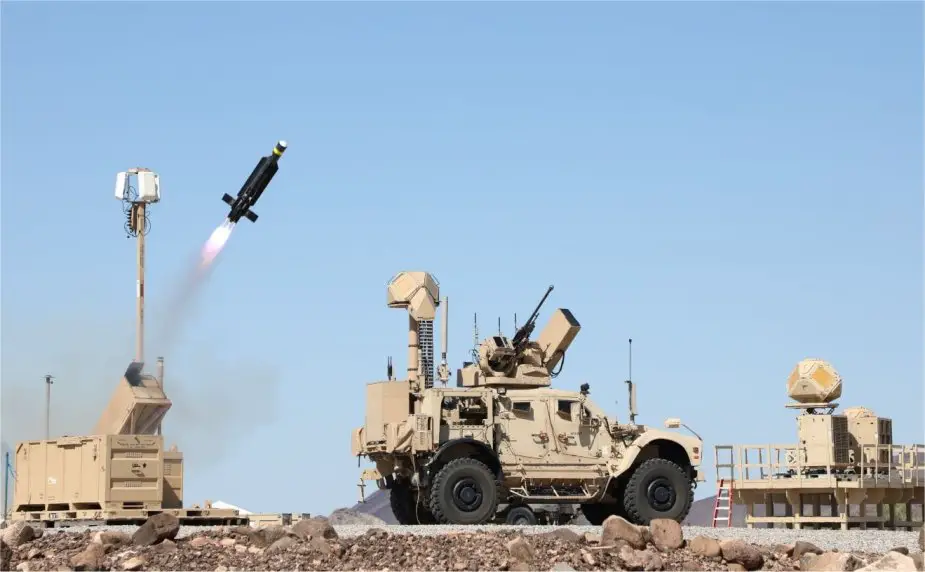U.S. Army awards contract to Raytheon for Coyote 2C interceptors
On February 9, the U.S. Army announced the award of a $75 million contract (approximately €70 million) to Raytheon, a subsidiary of RTX Corporation, for the production of 600 Coyote 2C interceptors, directly supporting its counter-unmanned aircraft systems (C-UAS) mission. Awarded on January 16, 2024, the contract is part of a rapid acquisition authority from the Office of the Secretary of Defense, communicated to Congress, with all procedures completed in under 30 days following the authorization's approval and funding receipt.
Follow Army Recognition on Google News at this link

Raytheon's Coyote systems can be operated from fixed positions or mobile platforms (Picture source: Raytheon )
This contract responds to an increasing demand for Coyote interceptors and the subsequent need to expand production capacity. The Coyote is a critical component of the U.S. Army's counter-UAS system of systems, functioning as a radar-guided, rail-launched missile with both kinetic and non-kinetic versions, designed for use in both fixed-site and mobile-platform applications to counteract threats from small, low, slow unmanned aerial vehicles (UAVs) and loitering munitions.
The initiative is spearheaded by the Army's Program Executive Office for Missiles and Space, in collaboration with other entities within the U.S. Department of Defense, demonstrating a coordinated effort to enhance the U.S. Army's defensive capabilities against unmanned aerial threats.
The Coyote, proven effective in combat, is a low-cost kinetic missile variant, rail-launched with a boost rocket motor and a turbine engine for high-speed C-UAS missions. Capable of defeating both small and large unmanned aircraft systems at greater distances and altitudes than similar class effectors, the Coyote can neutralize isolated drones as well as swarms, thanks to reduced engagement times that allow for targeting multiple threats simultaneously.
In conjunction with Raytheon's KuRFS (Ku-band Radio Frequency Sensor) radar, these systems provide essential detection and neutralization capabilities, forming crucial components of the U.S. Army's counter-UAS solution, the LIDS (Low, slow, small, unmanned aircraft Integrated Defeat System).
Coyote Block 2 missiles are designed to counter single drones or swarms of varied size and maneuverability. The Army has previously contracted Raytheon for the KuRFS radar and Coyote interceptors, with these capabilities already fielded.
Looking forward, the estimated production requirement for the fiscal period of 2025-2029 includes a minimum of 6,000 kinetic Coyote interceptors, 700 non-kinetic Coyote interceptors, 252 fixed-site launcher systems, 25 mobile launcher systems, 118 fixed-site KuRFS, and 33 mobile KuRFS, as indicated by a notice of intent to sole source published on Sam.gov in December.
Raytheon has also developed a reusable, non-kinetic variant, the Coyote Block 3. Last year, the Navy awarded the company a contract worth up to $147 million to support work on a modified Coyote Block 3 for the Navy’s Future Advanced Strike (FAST) program, according to a Defense Department announcement, with completion expected by December 25, 2024.
Three years ago, the Pentagon announced a $33 million contract awarded to the vendor for work on a Block 3 "autonomous strike" capability, with an expected completion date of February 26, 2024.
Defense News February 2024
- Hits: 1977
















